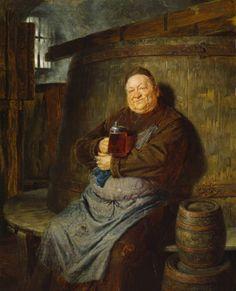 Often, when discussion of great beer gets going, the topic of Trappist beer comes up. Beer brewed by Trappist monks is often lauded as some of the best beer in the world. Indeed, Westvleteren XII from the Belgian St. Sixtus monastery is often referred to as the best beer in the world – it also happens to be one of the most difficult to obtain. The point being, the beer being brewed by monks in the 14 Trappist breweries around the world is not only good, but it is a time worn institution that goes back centuries.
Often, when discussion of great beer gets going, the topic of Trappist beer comes up. Beer brewed by Trappist monks is often lauded as some of the best beer in the world. Indeed, Westvleteren XII from the Belgian St. Sixtus monastery is often referred to as the best beer in the world – it also happens to be one of the most difficult to obtain. The point being, the beer being brewed by monks in the 14 Trappist breweries around the world is not only good, but it is a time worn institution that goes back centuries.
“Trappist” refers to monks of the Order of Reformed Cistercians, a Roman Catholic religious order that follows the Rule of St. Benedict. The name comes from the original monastery from which the order sprung: La Trappe Abbey in the French district of Normandy.
The Rule of St. Benedict is a long document written by Benedict that, among many other things, enjoins monasteries to be self-sufficient through their own hard work. It also requires monasteries to provide food, drink and shelter to travelers and especially pilgrims.
All of this brings us to Trappist beer. As a means of self-sustenance beer became a popular beverage for monks to brew. Not only did it help keep them hydrated in a time when water was dangerous at best and deadly at worst, but it also provided sustenance and nutrients during times of fasting when monks where prohibited to eat. Excess beer was allowed to be sold to help support the monastery.
In 1997, the International Trappist Association was formed by six Belgian monasteries and one each in Germany and The Netherlands. The aim of the ITA was to curb the use of the Trappist name on beer not produced by Trappist monasteries. A logo was created and is now added to the labeling on all beer and other products produced by certified Trappist monasteries.
To obtain the right to use the logo, Trappist monasteries must conform to several strict rules. According to the ITA’s website, Trappist beers:
- Must be made within the immediate surroundings of the abbey;
- Production must be carried out under the supervision of the monks or nuns;
- Profits should be intended for the needs of the monastic community, for purposes of solidarity within the Trappist Order, or for development projects and charitable works.
Beer was so important within the Catholic faith that a bevy of saints were adopted by brewers as their patron saints. One of the best known is St. Arnulf of Metz, also known as St. Arnold. The good saint claimed his status as a patron saint of beer after his death. The story goes that the parishioners of Metz so adored St. Arnulf that after his death and burial at a distant abbey, they asked for dispensation to exhume his body and reinter it in Metz. It was a particularly hot time of year when the parishioners were bringing the remains and plenty of beer was consumed on the journey. Before long, their beer supply had nearly run out when one of the parishioners cried out, ““By his powerful intercession the Blessed Arnulf will bring us what we lack.” Moments later it was discovered that their beer supplies had been miraculously replenished.
In recent years and with the help of the craft beer renaissance, monasteries are returning to the old ways to raise funds. Breweries are popping up in monasteries all across the globe. But, for a true Trappist ale, be sure to look for the logo and give thanks for the monks who perfected the craft.
